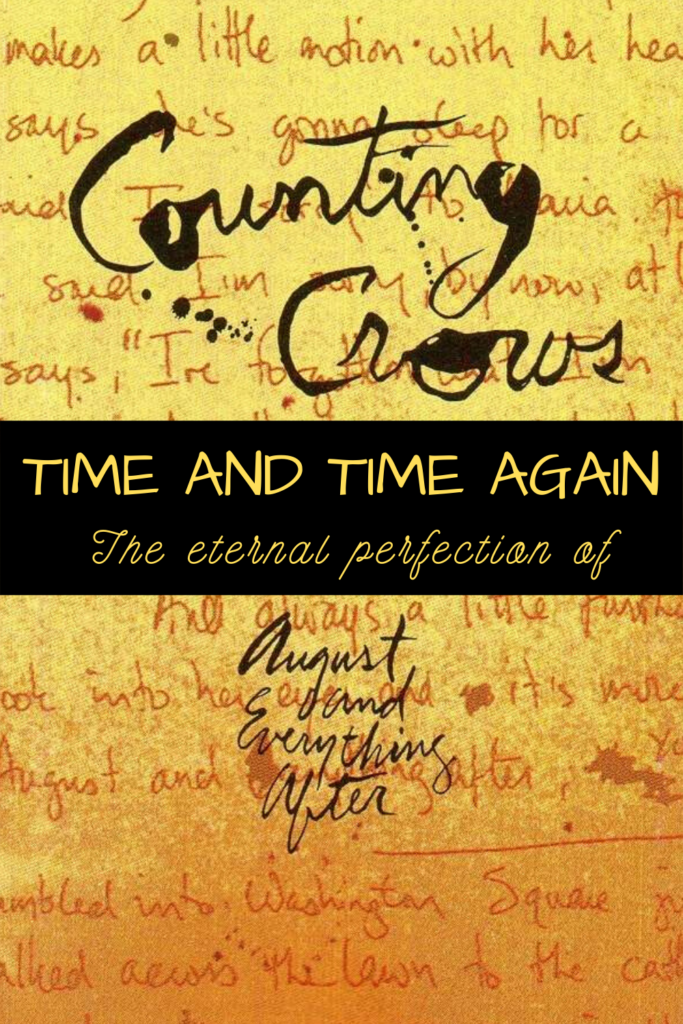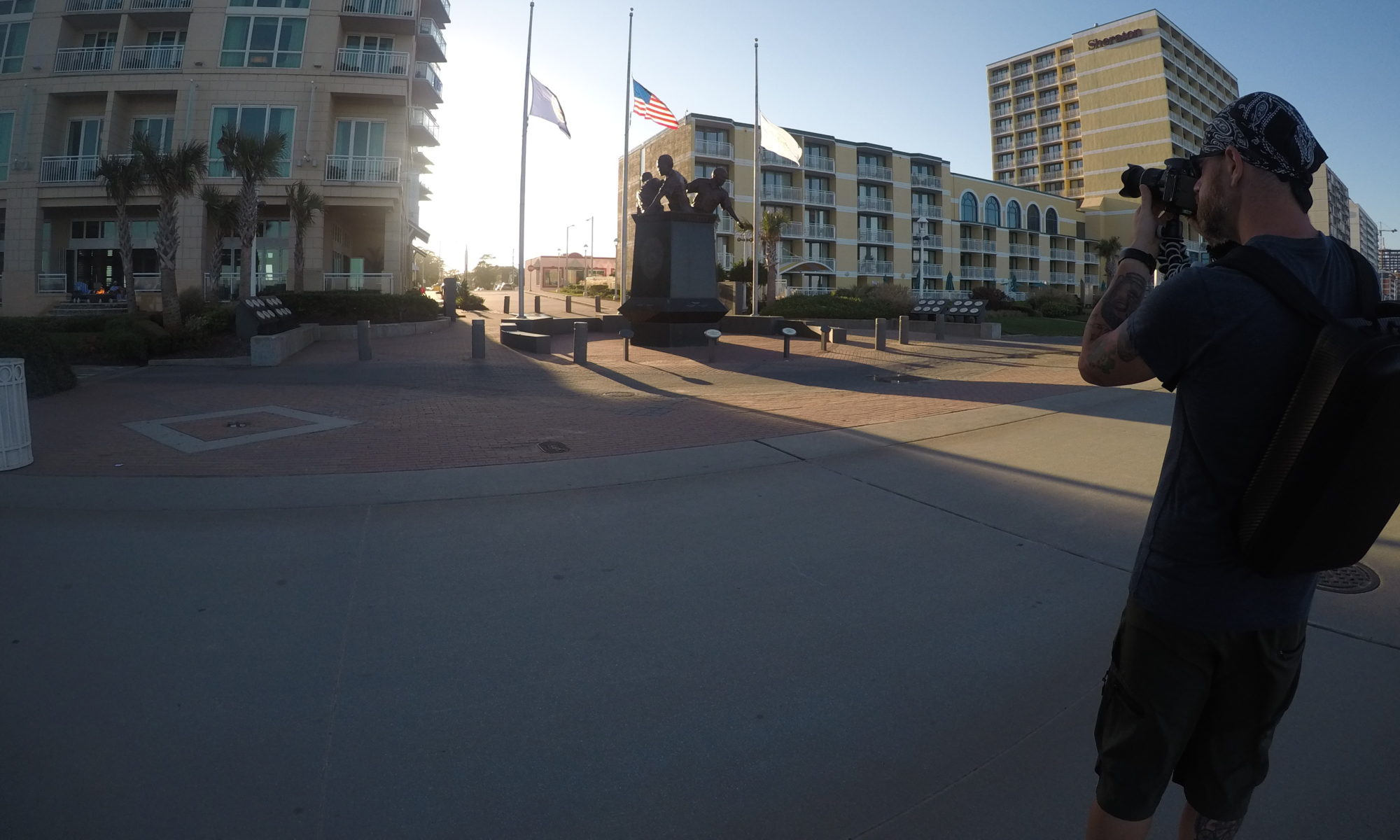
No walls and a cheap stereo
The summer of 1994 will forever be the most remarkable and mind-altering period of my life. Several events happened during that summer which permanently altered how I viewed the world around me. Specifically, I found August And Everything After by The Counting Crows. Before that, I began to dabble pretty heavily in marijuana after moving in with some friends. It was the first time in my life I lived outside of my parents’ home. I was relegated to a small cordoned off area in the attic. As I recall, I didn’t even have four walls. The entrance was a sheet strung up to divide me from the greater attic space.
In that “bedroom” was a bed, a small television, a game system, and a cd player. I survived on peanut butter & jelly and ramen while trying to get by on a part-time, minimum wage salary. At the time, I worked at a video rental store called Video Factory, which was later bought by Blockbuster. I was long gone and serving our nation in The Marine Corps before that ever happened.
With my meager earnings and having bills to pay for the first time in my life, there was nothing left for entertainment or adventure. I did two things a lot that summer besides smoking pot: I skated until my wheels wore off and I listened to music. This was long before the days of mp3s players. If you wanted to listen to something, you brought the CD with you. I generally had one of two albums in my player that summer: Vs by Pearl Jam or August And Everything After by The Counting Crows.
Pass me a bottle, Mr. Jones
The Counting Crows are an anomaly in the music industry. They hailed from San Francisco and were inspired heavily by Van Morrison and the Grateful Dead in a time when the Seattle music scene was heavily dominating radio. Their first single, Mr. Jones should have been dead in the water when in debuted in February of 1994. The album was released in the fall of the previous year to little fanfare. Geffen records had signed the band after they filled in for Van Morrison at a Rock & Roll Hall of Fame induction ceremony.
Mr. Jones was an instant hit, reaching number 2 on the Billboard Top 40. In hindsight, it is clear that a large swath of the music buying population was looking for something other than grunge rock and The Counting Crows were happy to give it to them. The song had a light aerie feel to it. It featured subtle Spanish beats and fast paced lyrics by Adam Duritz, the band’s front man. Duritz was also a contradiction to trends. He had a playful demeanor and featured meticulously maintained dreadlocks. His persona could not be any more different than other front men of the time like Kirk Cobain and Eddie Vedder.
She knows she’s more than just a little misunderstood
Mr. Jones had a more traditional musical structure with common verse and chorus arrangements. Their second released single shot that design out of the water. Round Here was a lyrical journey, telling a story so succinct that sounded as if Duritz could have just as easily been reading a poem at a local coffee shop. Round Here escaped the high pace and pounding beats that Mr. Jones introduced to the world. Rather, the guitar riffs and keyboard phrasing added a funky appeal with a much slower offering. With that said, this was also no ballad. It was a story of love and loss.
Click here to read about how Sundays are for Entertainment on The Daily Octane
I really enjoyed Mr. Jones, but I was 18 years old and looking for something different. At that point in my life I was on a journey of discovery. I had come out of high school, unsure of who I was, and I was looking to be as cool as possible. I was still jamming out to Pearl Jam’s 10 album and trying to get a taste for their follow-up, Vs. The first Counting Crows’ single was popular and I certainly heard it on the radio, but I did not run out and buy the album. That is until I heard the follow-up single, Round Here.
Bright colors and the lyrics
During that period of my life, I had not yet acquired the musical sophistication I have today. I was definitely a pop and rock radio guy. When I would buy an album, I would just play the tracks I knew over and over. The B-side songs seldom hit my ears unless I was too tired to get up and skip the track. That changed when I tore the cellophane off August And Everything After.

When I grabbed that CD from the shelf of the local record store, I was immediately struck by the cover. It was unlike any of the music I had been listening to for years. The album art was brightly colored and featured hand-written song lyrics on faded parchment. The band’s name and album title was sloppily written in pen.
I popped the disc in my player and hit play. The first track was Round Here. That was perfect. I sat on my floor next to the stereo and rolled a joint. Then something happened. The whole album began to play. Round Here was followed by Omaha. What in the hell was that? This new song, which to this day never received radio play was like nothing I had ever heard. It was timeless. It had instrumentation that felt like it was country, but still urban. Like Round Here, it was telling a story and ignoring the traditional song writing tropes.
I was hooked.
Oh Lord, I’m not ready for this sort of thing
I listened to the whole album that day, stoned out of my mind and soaked in sweat from oppressive heat in that attic space with no air-flow, let alone air-conditioning. After it finished, I slowly rose from where I was sitting and hit play again.
That summer I listen to August And Everything After incessantly. As I began to learn all of the songs, I could not stop myself from singing along. There was one song that made my voice swell more and more every time I crooned along with Duritz. That was Anna Begins. There was something about that song that strung a chord in my heart. I don’t know if it was the “on again, off again” relationship I was having that summer or simply the beauty of the lyrics.
Whatever it was, that song is still my favorite track on that album to this day. The last verse of Anna Begins swells with energy. With back-up singers layered beneath him, Adam’s voice rises until it hits a crescendo. Then the band suddenly drops out and leaves Duritz to send us off with, “I’m not ready for this sort of thing.”
It was probably not the first listen or even the tenth, but there was once a time where I was singing along with Anna Begins so passionately that I wept. That had never happened to me before. I was so unbelievably caught up in the emotion of the song in that moment that is took my breath away.
I am feathered by the moonlight falling down on me
August And Everything After sends you off with A Murder of One. The song features an intense drum beat that carries you continually through with symphonic melodies that cannot help but elicit a trance-like state. As you are lulled into a sense of calm, Duritz suddenly leaves the band to do their own thing. He starts to ramble, ignoring the normal tradition of singing harmoniously with the rhythm of the song. He becomes a crow in his own right, flying above the music.
The last verse of A Murder of One features a continuous chanting of the word “change.” It implores the listener, or perhaps Adam himself, to grow within. Do not conform to the crowd. Do not be afraid to be yourself. You do not need to run with the pack. In nature, a grouping of crows is called a Murder. The message is that you can be alone and be ok. You can be a murder of one.
Thank you Adam and The Counting Crows. A young me in 1994 really needed that message and it was received LOUD AND CLEAR.
Because of August And Everything After, I have been a murder of one ever since.
Christopher Hess, LMT
